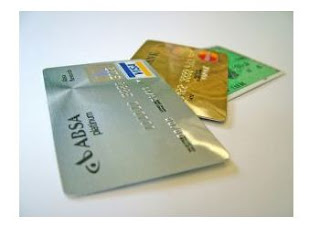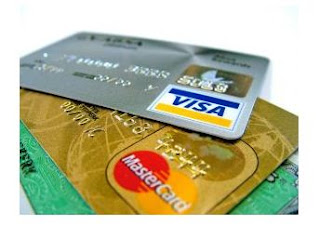
There is plenty you can do to avoid running out of money in retirement. Whether you are newly retired or retiring soon, planning is key.
Some retirees just plunge in and get into trouble.
Eight money mistakes those nearing retirement made and how to avoid them so your lasts.
Mistake 1: Not planning for medical expenses
Medicare kicks in at age 65, but that’s not the end of your medical expenses. Fidelity Benefits Consulting estimates a 65-year-old couple retiring this year will need $220,000 of their own money for medical expenses over the course of retirement. Those include deductibles for Medicare Part A and Part B (in-patient and out-patient insurance) and premiums and out-of-pocket costs for Medicare Part D prescription drug coverage.
Take action:
- Call your state insurance commissioner’s office to get help choosing the most cost-effective Medigap plan.
- To help dodge expenses from illness and disability, exercise regularly, and stay at a healthy weight. (Get a physical exam before beginning a diet or exercise program.)
Mistake 2: Underestimating costs
Retirement costs can be surprising. Surprisingly high, that is. You can manage costs by earning extra income in retirement. Here are the rules for working while receiving Social Security benefits.
AARP tells the story of Jackie Booley, who retired at 61 but later began working from home for about $9 an hour as a customer service representative. Numerous employers offer home-based jobs. But the field is rife with scammers, so learn the red flags.
Take action: Start shopping for jobs. (Research compensation at PayScale.com.) These articles have job ideas and resources:
- “Great Work-at-Home Jobs for Retirees” and “5 Part-Time Jobs for Retirees“ are among articles and resources at AARP’s job-hunting area.
- “10 Best Jobs for Americans Over 65“ from The Fiscal Times include casino work, market research, mediator, nutritionist, and Santa Claus gigs.
- “10 Part-Time Jobs for Retirees” from Bankrate lists consulting or freelancing, research for universities, government jobs, part-time seasonal work, customer service, teaching, and tutoring.
- “The Best Part-Time Jobs for You“ at The Huffington Post taps employment experts for ideas and resources. Among suggested jobs: bartender, tour guide, and flight attendant.
- For more ideas, read “7 Tips to Find a Job in Retirement.”
Mistake 3: Celebrating with a big purchase
No doubt you’ve got a wish list for retirement. But hold off major purchases and expenses at first to give retirement a spin and see what you’re spending each month. Track expenses – every single one. A year’s tracking gives the best picture because it includes one-time and seasonal expenses.
Take action: It doesn’t matter what tracking system you use. Just find one you like and keep it up. Keep receipts, watch bank and credit card accounts online on a weekly basis, and update your tracking regularly. Here are a few approaches:
- Free online budget programs. Money Talks News partner PowerWallet lets you track expenses automatically for free. It and other free money management services like Mint and BudgetTracker make money by recommending financial products and supplying coupons.
- Quicken. Users can enable online features or input expenditures manually. Cost: $30 and up.
- Microsoft Money Plus Sunset Deluxe. MSN’s popular software tool has been discontinued and replaced by (free download) Microsoft Money Plus Sunset Deluxe. It’s a no-frills product — no tech support and no linking to online accounts.
- DIY. Track expenditures manually and offline on a spreadsheet.
Mistake 4: Helping out the kids
Many parents set themselves up for a crisis in retirement by supporting adult children financially. A study by Merrill Lynch says 60 percent of people 50 and older are assisting adult relatives financially.
Most people realistically can’t do both. Adult children still have time to pay off college loans and save for retirement. Their parents are running out of time.
Take action:
- Make a concrete plan with goals and deadlines for gradually withdrawing financial help.
- Discuss the changes you are making with your kids.
- Help them learn to budget.
- Model financial restraint and responsibility for your kids.
Mistake 5: Claiming Social Security too soon
Waiting to claim Social Security benefits is one of the best investments around. Your Social Security account earns 8 percent a year when you hold off claiming benefits beyond your full retirement age.
If your full retirement age is somewhere between 66 and 67, your benefit check could grow by 32 percent if you wait until age 70 to collect, Social Security spokesman Michael Webb said in an email. If your full retirement age is 67, waiting until 70 yields a maximum possible increase of 24 percent.
The average benefit Social Security paid in January was $1,294 — $2,111 for a couple. If your full retirement age is 66, waiting until 70 would grow a $1,294 benefit to $1,708 a month for life. For couples, if both spouses wait to 70, the $2,111 average combined benefit can grow to $2,787 a month.
On the other hand, about half of retirees take Social Security at the earliest possible moment, when they’re 62, locking themselves into a much lower monthly benefit than if they had waited until full retirement age. U.S. News & World Report says:
Social Security benefits are reduced for workers who sign up at age 62, and the amount of the reduction has recently increased from 20 percent for people born in 1937 or earlier to 25 percent for baby boomers born between 1943 and 1954. … The reduction in benefits for people claiming at age 62 will further increase to 30 percent for everyone born in 1960 or later under current law.
This Social Security Administration table shows the reduction in taking early Social Security benefits depending on the year you were born.
Take action:
- Go to SocialSecurity.gov’s My Account to see your estimated benefits. If you’ve paid into the Social Security system, you can create an account and pull up a statement showing what you’ll earn by claiming benefits at various ages.
- Keep your current job if you can and delay retirement. Or get a part-time job that helps you hang on longer before claiming benefits.
- Hire a certified financial planner to review your retirement plan, income, and expenses with you. Find a fee-only certified planner.
For more tips on boosting your benefits, read “13 Ways to Get More Social Security.”
Mistake 6: Forgetting to plan for taxes
The IRS probably won’t disappear from your life when you retire.
For instance, traditional tax-deferred retirement plans like 401(k)’s and IRAs allow you to contribute pretax money to the accounts with the understanding that Uncle Sam will get his cut when you draw from the accounts after retirement. To that end, those accounts require you to withdraw a minimum amount each year beginning in the year you turn 70½. If you don’t, you could be hit with a 50 percent penalty on the amount you should have withdrawn.
There are calculators online that can help you compute required distributions,
Good planning, especially before retirement, can help manage the tax bite. One strategy, Stacy Johnson says, is to roll a portion of retirement savings into a Roth retirement plan, which has no minimum distribution requirements. Roth plans require taxes to be paid before money goes in. You withdraw the funds tax-free later. The strategies you use will depend on your income now and what you expect it to be after retirement.
Take action: Make a plan — or get expert help making one — that takes taxable retirement income into account.
Mistake 7: Ignoring estate planning
Get your affairs in order before you’re ill or old so you’ll have control over where your money and possessions go. It’s a kindness to your heirs, too, since they won’t be saddled with the work.
Take action:
- Make or update your will and, if appropriate, make a revocable living trust.
- Sign a durable power of attorney naming someone you trust to make your legal and financial decisions if you cannot.
- Assign health care power of attorney to someone to make your medical decisions if you’re unable.
Learn more from “Estate-Planning Documents You Need Right Now.”
Mistake 8: Investing too conservatively
As retirement grows nearer, it seems prudent to invest more conservatively. But you could live another 20 years. Savings held too conservatively shrink due to inflation. A portion of your funds needs to grow.
“Never taking a risk means taking a different risk,” Stacy says.
Take action: Learn about investing so you can be confident in taking measured risks to earn gains, even as you grow older.
What money mistakes have you seen retirees you know to make? Post your comments below or on Money Talks News’ Facebook page.
Source: Retiring Soon? Don’t Make These 8 Mistakes














